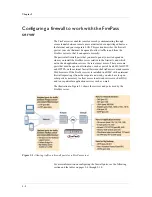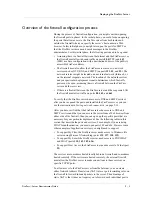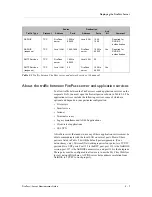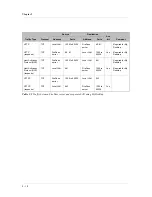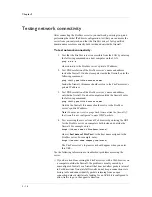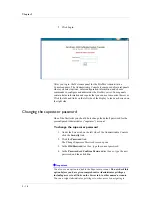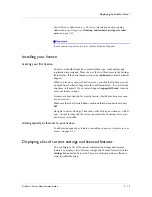
Chapter 2
2 - 4
the FirePass server. To use static NAT, configure a rule that forwards all
allowable traffic from the public IP address to the private IP assigned to the
FirePass server. However, some firewalls only allow static NAT using a
public IP address other than its own public interface. In this case, you must
use port forwarding by setting up rules to forward the appropriate ports to
the private IP address assigned to the FirePass server.
Firewalls can be classified as stateful and non-stateful. Stateful firewalls
allow bi-directional communication (that is, they create a return rule for an
allowed service). Older firewalls, especially ones based on Linux IP chains,
are often non-stateful; they do not allow bi-directional communications. If
you have a stateful firewall (most newer commercial firewalls are stateful),
you only need to define rules for the actual traffic; the replies are
automatically allowed to pass. If you have a non-stateful firewall, you also
must define rules for traffic coming in and the replies with the ACK
(acknowledgement) bit set for those protocols.
For completeness, the following tables list the types of traffic (in pairs of
request and response) that must be allowed through the firewalls for each
category of FirePass server functionality.
All traffic associated with the FirePass server falls into in one of these
categories:
•
Traffic between the remote user’s browser and the FirePass server. (See
About the traffic between a remote user’s browser and the FirePass
server, on page 2-5.)
•
Traffic between the FirePass server and network services, such as LDAP,
RADIUS, and DNS. (See About the traffic between the FirePass server
and network services, on page 2-6.)
•
Traffic between the FirePass server and application services, such as file
servers, email servers, and the Intranet. (See About the traffic between
FirePass server and application services, on page 2-7.)
•
Traffic between the FirePass server and corporate LAN using My
Desktop. (See About the traffic between the FirePass server and the
Desktop Agent, on page 2-9.)
Note
A particular type of traffic shown in the tables is only required if Required
appears in the Comment column for the traffic, or, as stated previously, if
you are enabling an application service that requires the port to be opened.
Summary of Contents for FirePass
Page 1: ...FirePassTM Server Administrator Guide version 4 0 MAN 0081 00 ...
Page 2: ......
Page 4: ...ii ...
Page 5: ...Table of Contents ...
Page 6: ......
Page 12: ......
Page 18: ...Chapter 1 1 6 ...
Page 20: ......
Page 44: ...Chapter 2 2 24 ...
Page 46: ......
Page 82: ...Chapter 3 3 36 ...
Page 84: ......
Page 124: ......
Page 156: ...Chapter 5 5 32 ...
Page 158: ......
Page 168: ......
Page 177: ...Index ...
Page 178: ......













